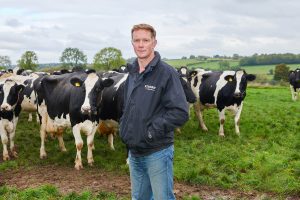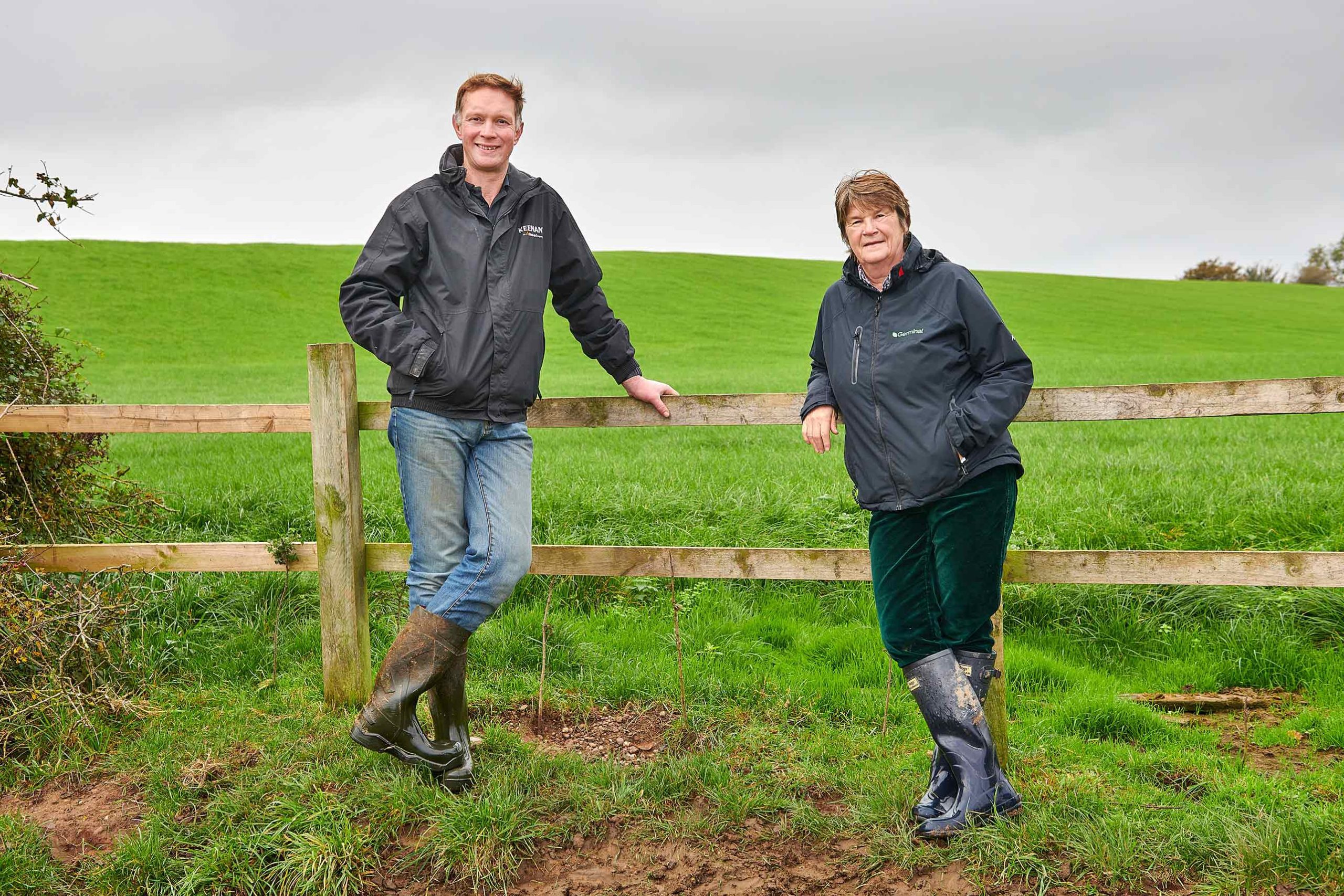By using clover and slurry in recent years, dairy farmer brothers Tony and Michael Ball have managed to reduce their nitrogen fertiliser use at Vernon’s Oak Farm in Sudbury, Derbyshire. You can learn more about the progress of their dairy system below.
Farm facts: Vernon’s Oak Farm
- 300 ha (750 acres)
- 162 ha (400 acres) grass leys
- 64 ha (160 acres) maize
- 52 ha (130 acres) wheat
- 8 ha (20 acres) barley/pea/vetch wholecrop
- 24 ha (60 acres) miscanthus as an energy crop
- 500 all-year-round calving Holsteins milked by robots
- 10,000 litres a cow a year at 3.9% fat & 3.3% protein
- 3,000-3,500 litres a cow from forage
- Cows fed zero grazed grass; grass and maize silage; wholecrop silage
- Separate 200-cow autumn block calving system on an additional 134 ha (330 acres)
Autumn 2021 update
The late lactation cows were in full-time from the end of October 2021 on Vernon’s Oak Farm. The in-calf heifers came in about a month later, having not been at all impressed when November’s storm Arwen went through and turned things cold, wet and miserable. The far-off dry cows remained out during the day with one group of heifers having continued access to the outdoors until Christmas.

Autumn was generally very kind. The maize harvest went smoothly with fields relatively dry and travelling well. The maize had dried down well, resulting in an earlier harvest. Yields were exceptional for filling the clamps, giving the Balls plenty to carry over for the new season.
As a result, they decided to take 20 acres out of 2022’s planned maize acreage and sow more winter wheat. The good maize harvest and mild, dry weather in October/November, allowed them to put the winter wheat into a sound seedbed in good time. This was a big improvement over the two previous years.
Grass silage stocks good
As well as the maize, grass silage stocks were also good, although wet weather at the wrong times meant they cut later than they would like. This resulted in both the first and second cuts not analysing as well as in 2020.
But the solid grass-growing year and subsequent healthy silage stocks allowed Tony and his brother to save on fertiliser. This was particularly true towards the back end of the season as they weren’t chasing extra grass.
Red clover swards performing well
The red clover swards, grown in a grass ley, performed well again in 2021. After a slow start to spring, grass growth was tremendous, particularly from the new seeds, giving good silage stocks from less acreage and leaving more grass for grazing/zero grazing.
Youngstock weren’t overly keen on grazing down the more mature red clover plants, but the cows fed well on relatively strong red clover as part of the zero-grazing rotation.
Weed control is a concern in the new clover-containing leys, whether red or white clover. Zero grazing helped clean up two fields sown at the end of July following spring barley/pea wholecrop.
However, those established in September following winter wheat were slow to germinate in dry conditions and looked quite weedy going into winter.
Reducing reliance on bought-in nitrogen fertiliser
Tony reported no significant impact on their 2022 plans from the input price volatility. Milk price increases helped offset feed price rises and the brothers buy fertiliser in the summer or autumn, once the new prices are available, and managed to cover the next season before prices escalated.
Tony commented: “I can’t see prices dropping back to what we once considered ‘normal’, so we need to make sure our applications are made to achieve maximum effect. We will also look to make the most of our slurry’s nutrient value to reduce reliance on bought-in nitrogen.”
Originally published in Forager Magazine from Germinal – Spring 2022 Dairy edition
Trust the grass and forage experts
Please get in touch if you require any grass and forage guidance.

